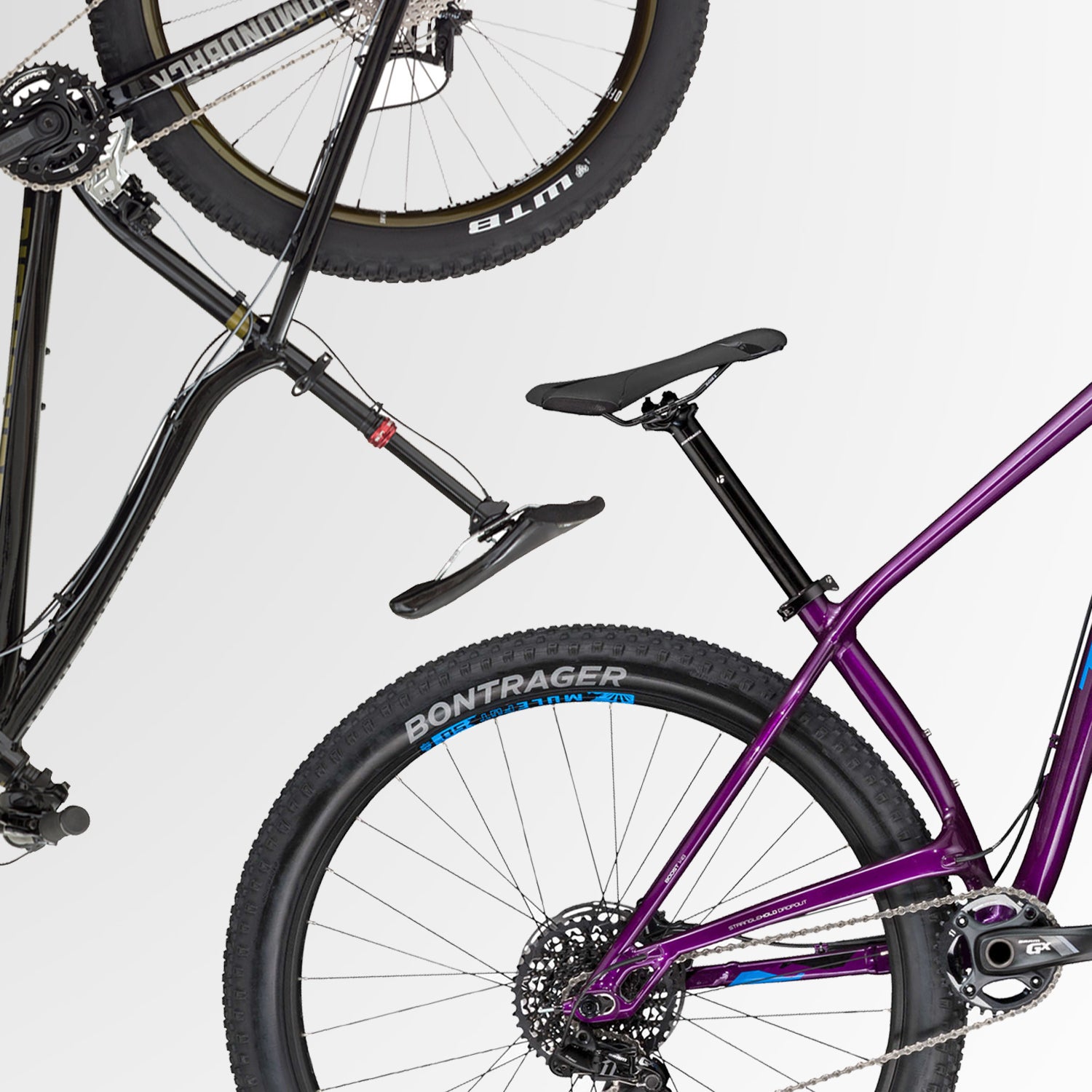Mountain bikes can be broken down into a few broad categories: cross-country (XC) for racing and going fast, trail bikes for general use and all-around mountain riding, all-mountain or enduro for more technical trails, and downhill (DH) for flat-out descending. Don’t get caught up in the labels—everyone has their own definitions. What’s important to understand is that all bikes fit somewhere on this continuum, and choosing the right style means balancing a handful of considerations, including frame geometry, design and amount of suspension, and weight.
The 4 Categories
XC bikes are typically the lightest, have the least amount of suspension, and are built with steeper geometries that favor pedaling. They’re often rigid (no suspension), hardtails (suspension up front only), or, if they have dual suspension, have around four inches (100 millimeters) of travel.
On the other end of the spectrum, DH bikes are always full suspension and built with extremely slack geometries that are great for tearing down hills but not great at pedaling. They’re also heavy so they can take a lot of abuse and tend to have around eight inches (200 millimeters) of travel.
Here’s an important note to remember: unless you live in a place with very particular trails (extremely smooth or unusually rocky and technical) or have a specific desire to race either downhill or XC, neither of these specialized bikes are for you. You’ll be better served by something in the middle of the spectrum that does a lot of things well.
Consider a trail bike. These can be hardtails, which keep the complication factor and cost down. (We do not recommend fully rigid designs for your first mountain bike—the lack of suspension will probably make you miserable.) More often, trail bikes have full suspension, with somewhere between 4.7 inches (120 millimeters) to 5.5 inches (140 millimeters) of travel. The general rule of thumb is the more travel your bike has, the easier and more comfortable it is to negotiate obstacles. The additional suspension also adds weight, however, which makes pedaling and climbing tougher.
Enduro bikes sit closer to the DH end of the spectrum with six or seven inches of travel. If you live around rocky trails or want to focus on big-hit riding, this is a good category to look at. But for the most part, a beginner rider will be best served by a trail bike.
���ܲ����Բ����Dz���
A handful of companies build their own suspension systems; designs and configurations vary between each brand. While each will tell you why their iteration is the best around—and there are indeed nuanced differences—the truth is that most designs from reputable brands (the ones at your local shop) work pretty damn well. So our recommendation for a beginner is to not worry too much about suspension and instead focus on the category of bike that’s best for you.
�Ѳ��ٱ������������
You also have a choice between frame materials. Aluminum or alloy frames are generally the least expensive. Steel, titanium, and carbon fiber are lighter and more damping—they cut vibration better—but are more expensive.
Those latter materials can all be excellent. If you can afford the upgrade, they’re worth considering, especially for the weight savings. That said, aluminum engineering and forming has come a long way, and if price is a consideration, going alloy is your best bet.
Our Picks
On the hardtail side, one of the best, most affordable models we’ve found is the , which leans toward the XC side of the game but also gets you into a nice, boutique company with excellent detailing and support for just $1,500.
The is built for more aggressive riding and not generally marketed to beginners, but we find the slack angles and dropper seatpost actually work well for learning.
, with its wide three-inch tires and oversized wheels, is a bit different than most bikes out there, but its stability and comfort can’t be beat (and might be the only we’d suggest for starters). It rides so fast and hard that you’re abilities won’t outgrow it anytime soon.
In full suspension, the cuts a really nice middle ground between cross-country and all-mountain machines, with 120mm of travel, a relatively slack head angle that’s good for both climbing and descending, and an overall feel that’s comfy on everything from dead-easy dirt roads to steep, technical trails.
The , revised for 2016, is a similar machine, and so good at everything that it very nearly won our Gear of the Year award. Both bikes are available in two wheel sizes, which we’ll go into greater detail below, but unless you are very small or have fit issues that make it difficult to ride a bigger bike, we definitely recommend the 29er versions. The Camber and Fuel EX come in multiple build levels and part specs, but even the least expensive iterations (both under $2,000) offer great value.



 Read our
Read our